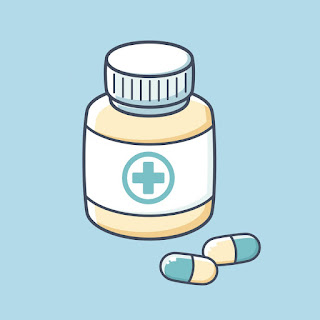FIRST ORAL MEDICINE WITH INSULIN TRAILED SUCCESSFULLY TO TREAT TYPE 1 DIABETES
Prof Dr,DRAM,HIV /AIDS,HEPATITIS ,SEX DISEASES & WEAKNESS expert,New Delhi,India, +917838059592
The incidence of type 1 diabetes, which currently affects 29 million adults worldwide, is rising.In the United States, the number of patients with type 1 diabetes who are younger than 20 years of age may triple within 30 years. Less than one third of adults with type 1 diabetes achieve a glycated hemoglobin level lower than 7.0%, and most are overweight or obese.Patients with type 1 diabetes also face risks of complications or death from severe hypoglycemia and diabetic ketoacidosis. The ideal treatment for type 1 diabetes should enable patients to maintain a glycated hemoglobin level lower than 7.0% without weight gain or an increased risk of hypoglycemia and diabetic ketoacidosis.
 Except nasal spray of Insulin or insulin pill no tablet or oral medicine is present to treat Type I diabetes but Sotagliflozin (LX4211) is a new oral inhibitor of sodium–glucose cotransporters 1 and 2 (SGLT1 and SGLT2). SGLT1 inhibition reduces glucose absorption in the proximal intestine, which significantly blunts and delays postprandial hyperglycemia. SGLT2 inhibition decreases renal glucose reabsorption.1In phase 2 studies, the administration of sotagliflozin improved glycemic control and lowered body weight among patients with type 1 or 2 diabetes; it also reduced glycemia, despite a decreased bolus dose of insulin, among patients with type 1 diabetes.
Except nasal spray of Insulin or insulin pill no tablet or oral medicine is present to treat Type I diabetes but Sotagliflozin (LX4211) is a new oral inhibitor of sodium–glucose cotransporters 1 and 2 (SGLT1 and SGLT2). SGLT1 inhibition reduces glucose absorption in the proximal intestine, which significantly blunts and delays postprandial hyperglycemia. SGLT2 inhibition decreases renal glucose reabsorption.1In phase 2 studies, the administration of sotagliflozin improved glycemic control and lowered body weight among patients with type 1 or 2 diabetes; it also reduced glycemia, despite a decreased bolus dose of insulin, among patients with type 1 diabetes.
Trial (inTandem3) revealed a concerning increase in risk of DKA – 3% of those taking sotagliflozin experienced DKA, compared to 0.6% in the placebo group. Still, on other measures such as lowering A1c and avoiding hypoglycemia, more people taking sotagliflozin benefitted than people taking placebo. Given that all participants were educated on DKA risk management (like using a ketone meter when not feeling well even with in-range or low blood sugar levels), it will be important for researchers to follow up on this risk before sotagliflozin will be approved by the US FDA.
Though sotagliflozin is still in clinical trials and is not yet commercially available, many leadings healthcare providers and researchers have expressed excitement about the potential of this pill to help people with type 1 better manage their diabetes. If approved, sotagliflozin will be the first dual SGLT-1/SGLT-2 inhibitor available, bringing an important treatment option to people with type 1 diabetes in addition to insulin. Other examples of drugs being developed for use in type 1 diabetes in addition to insulin (called “adjunct therapies”) include Farxiga and Jardiance, both SGLT-2 inhibitors.
- Kidney stones universally present hazard in north india,dillution by water prevent it
- Steroid and placebo effect equally for mild persisting asthma with low sputum eosinophils
- Government wants to fix public healthcare staff shortages with ayush docs: will it work?
- Plea in hc for payment of salaries of edmc, north mcd teachers and doctors
- 7 indian pharma companies named in us lawsuit over inflating generic drug prices
- Woman in up dies after explosion in her mouth during treatment,what is diagnosis?
- Woman in up dies after explosion in her mouth during treatment,what is diagnosis?
- Woman in up dies after explosion in her mouth during treatment,what is diagnosis?
- Air pollution ! mothers organising rally in london,anaesthetist choosing gas,will india follow?
- Cardiac arrest is always not sudden as understood -a study

 Comments (
Comments ( Category (
Category ( Views (
Views (